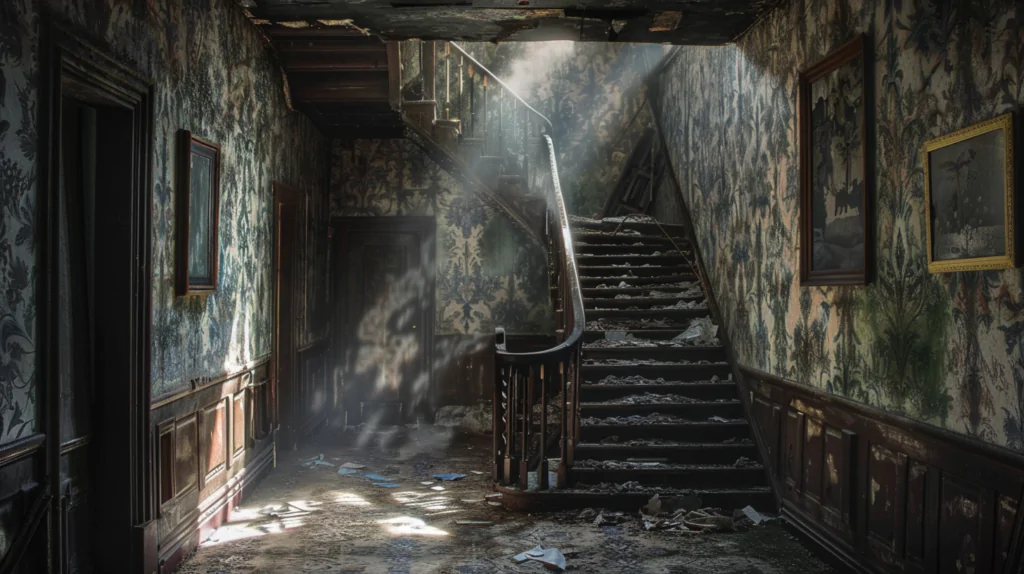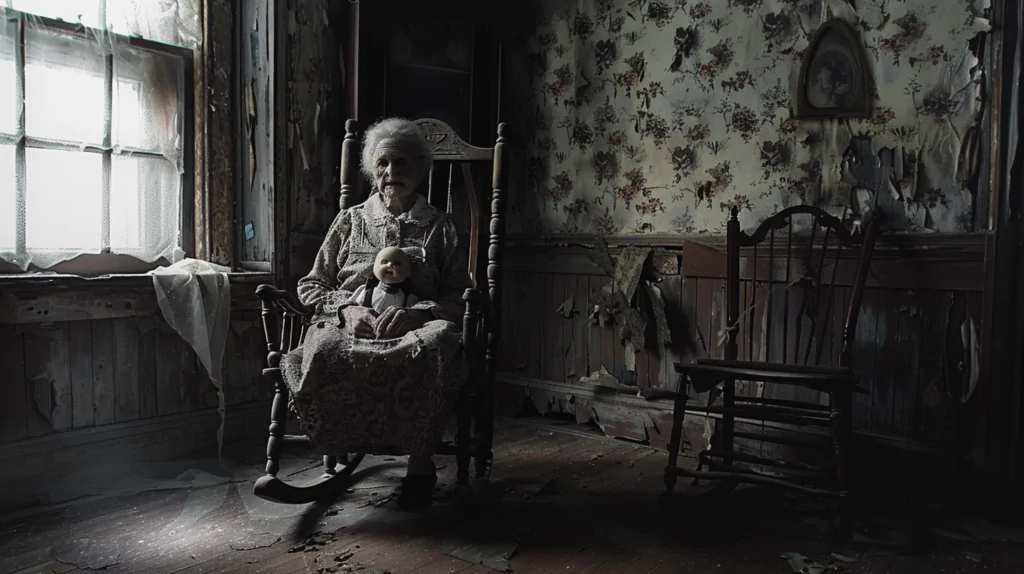
The Architecture of Fear: How Houses in Horror Movies Trap More Than Just Ghosts
Houses are not just houses. Not in horror films. They are breathing, watching, waiting. Their walls have ears, their floors whisper secrets, and their doorways always seem wider when you’re alone. The Conjuring. Insidious. These aren’t just stories about ghosts; they are stories about space—about how architecture itself conspires against us, twisting comfort into claustrophobia, home into haunting.
Consider the Perron family’s house in The Conjuring. A farmhouse drenched in history, yet somehow stripped of warmth. It isn’t just old—it’s too old, its wooden bones aching under the weight of something unseen. The ceilings press down, the walls hold their breath, and the doors… well, they seem to have minds of their own. The wallpaper curls like it’s trying to peel itself away, to escape. The house is not just haunted; the house is alive.
And then there’s Insidious, which plays a more deceptive game. The Lambert home seems ordinary, familiar—until it isn’t. Unlike The Conjuring’s house, which practically shouts its haunted status, this one whispers. Its horror is in the almost. The hallways stretch just a little too long. The baby monitor picks up sounds that don’t belong. The house doesn’t reveal its intentions immediately; it waits, silent and patient. It doesn’t have to trap you—you trap yourself, lulled into its quiet wrongness until it’s too late.
Horror movie architecture follows a silent rule: fear lives in the in-between spaces. The basement that seems deeper than it should be. The attic door that never fully closes. The staircase that creaks, even when you’re standing still. These spaces exist between safety and something else—something hungry. And it’s not just about forgotten rooms or darkened corners. The very scale of a space manipulates fear.

A ceiling too high swallows you in emptiness. A doorway too narrow makes you hesitate before stepping through. A hallway that extends beyond what your eyes can measure forces your body into fight-or-flight mode. In The Conjuring, doors are taller than they should be, towering like silent sentinels. In Insidious, rooms become labyrinths, subtly shifting to disorient and trap. The architecture itself conspires, making you doubt your own perception of space.
Interiors in horror films tell stories long before the ghosts arrive. Heavy drapes that filter moonlight into shifting shadows. Furniture that looks like it was abandoned mid-conversation. Clocks that stop at the exact same time every night. A rocking chair, gently swaying with no one in it. These details are not just set dressing—they are the language of unease. In Insidious, the red-faced demon doesn’t lurk in the shadows; it is the shadows. In The Conjuring, the Warrens’ occult museum isn’t just a collection of cursed objects—it is a graveyard of unfinished hauntings, each relic humming with residual dread.
But here’s the truly unsettling thought: real-world architecture can be just as consuming, just as oppressive. Think of Brutalist buildings—those cold, looming monoliths of concrete that crush you with their sheer weight. Their lack of warmth, their sheer inhuman scale, evokes a kind of existential dread, as if the building itself is devouring the people inside. Hospitals, with their endless corridors and fluorescent sterility, feel eerily void of time. Government buildings, with their cavernous ceilings and echoing footsteps, impose power by making you feel small. Space dictates emotion. And when it is designed for control, it becomes a quiet kind of horror.
Because maybe that’s the real fear—that architecture remembers. The walls hold echoes of every voice that has passed through them. Those houses, once filled with laughter, can sour into something resentful. That a home can trap more than just its ghosts; it can trap you.
So the next time you hear a door creak behind you, take a second to wonder: did it move on its own? Or was it waiting for you to notice?




